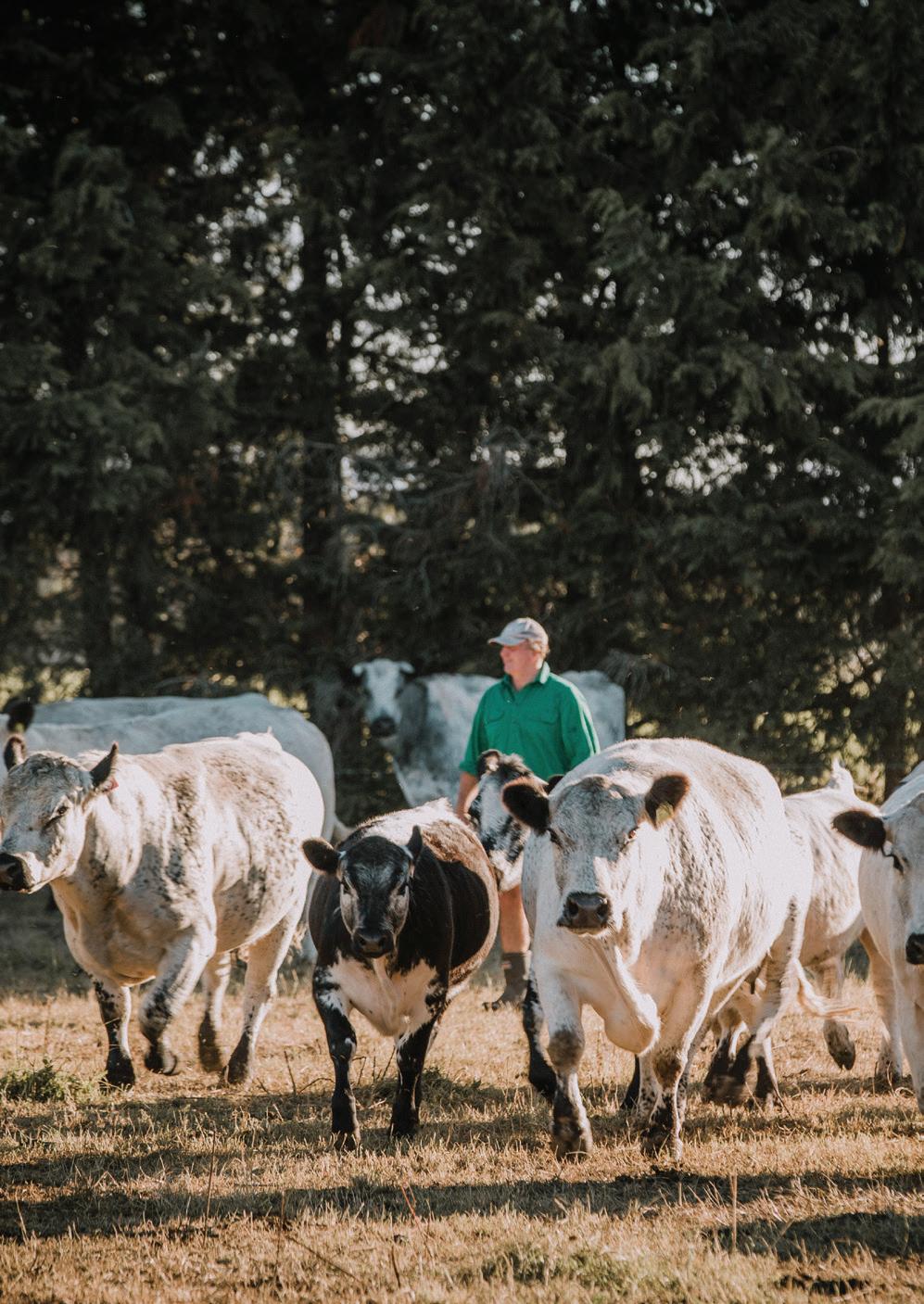INTEREST
Farm reinvented as wedding venue Once home to one of the country’s leading red deer herds, Mark and India van der Wilt have put Bangor Farm back on the map, transforming it into a thriving wedding venue and function centre. WORDS & IMAGES SUPPLIED BY ANNIE STUDHOLME
Driving up the magnificent avenue of 160-yearold trees to Bangor Farm with views of Mount Hutt and Mount Torlesse, it’s hard not to be blown away. Steeped in history, Bangor is reminiscent of the grandest English country estates emanating classic Capability Brown style, complete with a lake and oak avenues, as well as elms, ash, and other English trees. With all this history, it’s easy to see why Mark and India van der Wilt were drawn to the property almost five years ago. Originally from Arrowtown, Central Otago, Mark had spent many years working in the film industry before opening a small quarry on land they owned in the Gibbston Valley, while India came from a background in retail. In a bid to be closer to family and their other black-sand mining interests on the West Coast, the couple decided it was time to move north to Canterbury. Mark’s mother’s family came from Kuriheka in North Otago, a place which 8
RE AL FARM E R
ABOVE: Mark and India with their children, Emma, Ella and Sam
has always held a special place in his heart. “I wanted a place that had old trees [like Kuriheka] and that would be a home for the girls and son, Sam,” says Mark. “We looked at the [Bangor] homestead but walked away from the amount of work it required. Driving up the original main entrance to the deer shed block, it just blew us away. It was the trees. It felt like a French television commercial. Weddings immediately sprung to mind. We could imagine a marquee there in the grass and thought what better way to share the special piece of history, environment and this feeling with others.” Originally covering 2,400 hectares, Bangor was once one of Canterbury’s grandest old country estates, revered for producing fine sheep and
wool, and its heavy wheat growing land. It was first purchased by the Ward brothers in 1854, who were nephews of the Viscount of Bangor in Ireland. They came with grand plans of establishing an English-style deer park. Upon their arrival they built a small stone house with earth floors and started establishing the grounds, planting many of the English trees that still thrive today. Sadly, after the ship carrying a herd of deer was lost at sea, it took more than a century for Viscount Bangor’s dream to be realised. After one of the Ward brothers tragically died in a yachting accident in Lyttelton Harbour, Bangor was sold to well-known engineer George Holmes. Holmes was responsible for building New Zealand’s first railway network, including the Christchurch to Lyttelton railway tunnel that opened in 1867. In 1870, he started work on the new classical colonial style homestead at Bangor. The homestead and 1,100 acres were later sold to A.E.G Rhodes in 1919, who gifted it to his daughter on her marriage to Major George Hutton. It remained in the Hutton family for three generations until it was sold in 1987. In the years since the Hutton’s owned it, Bangor passed through many hands. The homestead has undergone significant alterations, previously being used as a luxury guest lodge and now back into private ownership, and the property has been carved into many small holdings. The first deer park at Bangor was started in 1980 bringing Viscount Bangor’s dream to fruition but it was renowned deer breeder Clive Jermy that took it to the next level setting up Stanfield’s Stud there in 2008 with the building of the impressive deer antler museum and sales complex. Jermy had been an influential player in the fledgling deer industry since the early 1980s when he secured the franchise for genetics from great English deer parks Woburn Abbey and Warnham Park. He started out in Cambridge, before moving south to Bushey Park, near Palmerston, where he ran a large operation with 1,000 velveting stags, 750 breeding hinds for venison, 250 breeding hinds for velveting replacements, in addition to the red deer stud, an Eastern European stud, and a Hereford cattle stud. On moving to Bangor, the operation was downsized, focusing exclusively on red deer genetics, but continued to lead the market. The deer antler museum contained hundreds of heads, including some red deer world records. Unfortunately, circumstance saw the Stansfield’s



















